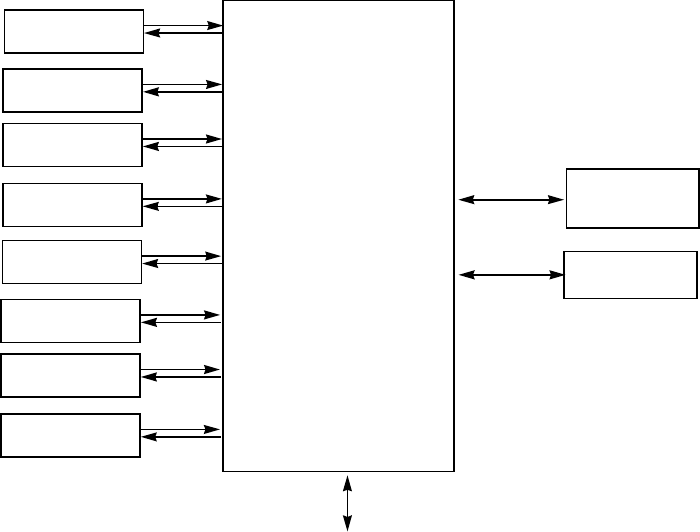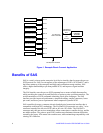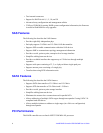
3 Intel® RAID Controller SRCSAS18E User’s Guide
Figure 1. Example Direct-Connect Application
Benefits of SAS
SAS is a serial, point-to-point, enterprise-level device interface that leverages the proven
SCSI protocol set. SAS is a convergence of the advantages of SATA, SCSI, and FC, and is
the future mainstay of the enterprise and high-end workstation storage markets. SAS
offers a higher bandwidth per pin than parallel SCSI, and improves signal and data
integrity.
The SAS interface uses the proven SCSI command set to ensure reliable data transfers,
while providing the connectivity and flexibility of point-to-point serial data transfers. The
serial transmission of SCSI commands eliminates clock skew challenges. The SAS
interface provides improved performance, simplified cabling, smaller connectors, lower
pin count, and lower power requirements when compared to parallel SCSI.
SAS controllers leverage a common electrical and physical connection interface that is
compatible with Serial ATA technology. The SAS and SATA protocols use a thin, 7-wire
connector instead of the 68-wire SCSI cable or 40-wire ATA cable. The SAS/SATA
connector and cable are easier to manipulate, allow connections to smaller devices, and do
not inhibit airflow. The point-to-point SATA architecture eliminates inherent difficulties
created by the legacy ATA master-slave architecture, while maintaining compatibility with
existing ATA firmware.
Flash ROM/
SAS/SATA Device
32-bit Memory
Address/Data
Bus
PSBRAM/
I
2
C
SAS/SATA Device
SAS/SATA Device
SAS/SATA Device
PCI Express Interface
NVSRAM
I
2
C
Interface
Port 0
Port 1
Port 2
Port 3
SAS/SATA Device
SAS/SATA Device
SAS/SATA Device
SAS/SATA Device
Port 4
Port 5
Port 6
Port 7
PCI Express*
RAID Controller


















